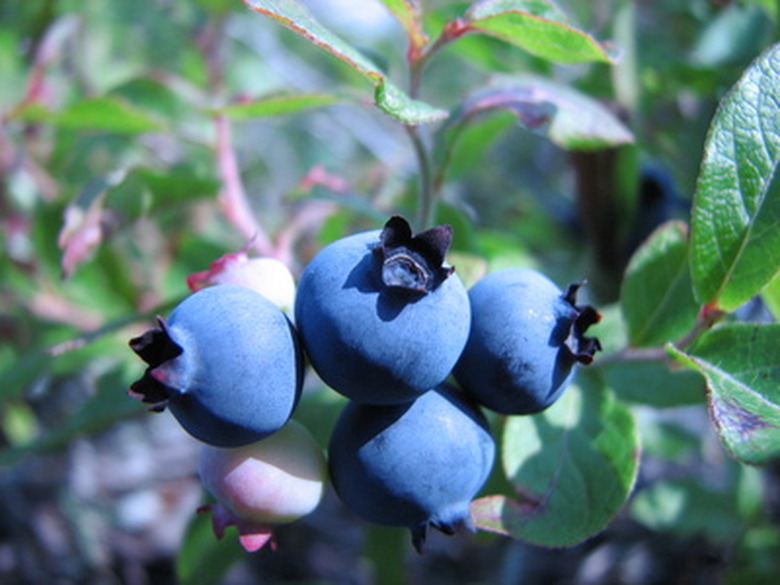Blueberry Planting In South Texas
Rabbiteye blueberries (Vaccinium ashei) have gained popularity in the South, and they will do extremely well when planted in south Texas. This species requires an acid/sandy soil with a pH of 4.5 to 5.5. Most soils in south Texas meet these criteria. This cultivar is also drought- and heat-tolerant, making the rabbiteye blueberry an excellent cultivar to plant.
Characteristics
Rabbiteye blueberry plants will reach maturity in approximately 10 years. Mature plants reach a height of 15 feet and have a spread of 10 feet; so the planting site should be large enough to provide the space needed to grow the rabbiteye blueberry shrub/bush. Fruit will be produced on shoots of the previous year's growth, at the top of the bush. It does need cross-pollination to fruit; therefore you need to plant more than one variety.
- Rabbiteye blueberries (Vaccinium ashei) have gained popularity in the South, and they will do extremely well when planted in south Texas.
- Mature plants reach a height of 15 feet and have a spread of 10 feet; so the planting site should be large enough to provide the space needed to grow the rabbiteye blueberry shrub/bush.
Variety Selection
Varieties vary in regard to their fruiting seasons. Some, such as Climax, Brightwell, Beckyblue and Premier, produce fruit early in the season. The Tibblue and the Powderblue varieties produce fruit mid-season, and the Centurion produces fruit late in the season. You can have blueberries all season long if you plant several different varieties according to their fruiting times.
Site and Soil
Blueberries should be planted in full sun and in well-drained, highly organic soil. A soil sample should be taken before planting to make sure that the pH is between 4.5 and 5.5. Good sources of organic material that can be mixed into the soil before planting are pine bark or peat moss—you can do a mixture of 50 percent organic material to 50 percent soil. Rabbiteyes have a shallow root system, and plants should be mulched after planting to retain moisture and keep weeds down.
- Varieties vary in regard to their fruiting seasons.
- Rabbiteyes have a shallow root system, and plants should be mulched after planting to retain moisture and keep weeds down.
Watering
Bushes should be watered when planted and then twice a week for the first year. Once the bushes are established, they can be watered either once or twice a week. Blueberry plants can retract water from berries. It is important, then, to water the blueberry bushes during the fruiting season, as adequate water will ensure juicy berries. (Some gardeners place drip irrigation/soaker hoses under the mulch.)
Fertilization
Rabbiteye blueberries are extremely sensitive to fertilization. A newly planted rabbiteye blueberry bush should not be fertilized. According to Texas A&M University, you should use only "ammonium sulfate or special azalea or camellia fertilizers." Applications should be in small amounts—do not apply one heavy application. Bushes can be fertilized twice a year, in spring when new growth begins, and after the berries have been picked. Never apply a nitrate-type fertilizer, as it will kill the blueberry plant.
- Bushes should be watered when planted and then twice a week for the first year.
- It is important, then, to water the blueberry bushes during the fruiting season, as adequate water will ensure juicy berries.
- (
Pruning
Blueberry bushes produce fruit on 1-year-old wood, or the previous year's wood. Pruning promotes new growth and larger berries and is very important to the vigor of your blueberry plant. You should prune away one-third of the height of a newly planted bush as well as any crossover branches. Fruit buds should be removed during that first year. This will cause the plant to develop shoots and a strong root system. After that first year you will prune to: maintain size and shape; remove dead, diseased, or damaged wood; stimulate growth; and to open up the bush to allow sunlight and air into the interior of the plant.
